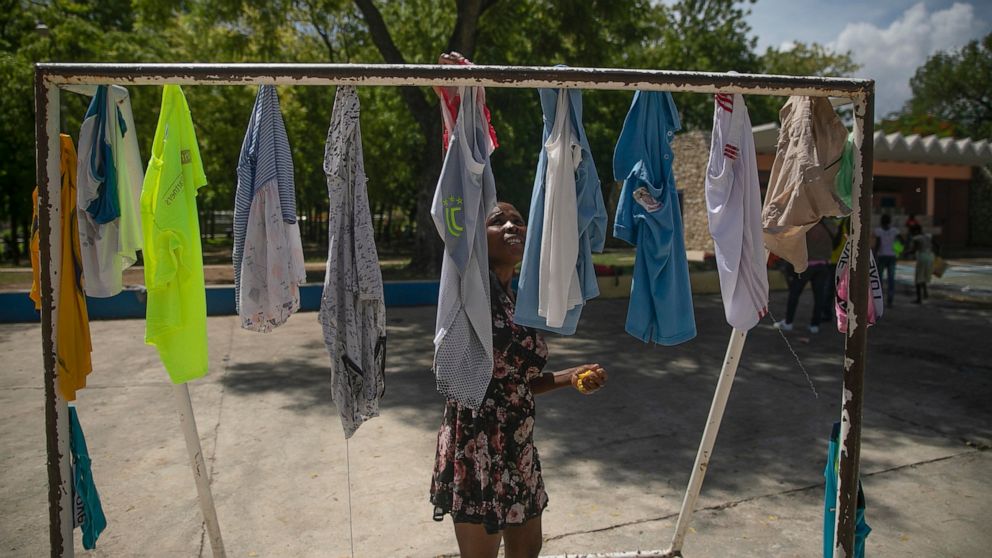[ad_1]
Exhausted firefighters have been battling blazes in northern Argentina for weeks. Fueled by sturdy winds, little rain and dry situations introduced on by an unusually lengthy drought, wildfires have already destroyed practically 8,000 sq. kilometers (3,000 sq. miles) of forest, swamp and farmland, an space barely smaller than the island of Puerto Rico.
“It by no means occurred to us, we by no means lived one thing like this, we have been actually overcome,” one resident, Jorge Ayala, informed The Related Press information company over the weekend. However wildfires like this are anticipated to develop into extra prevalent, and extra damaging, within the coming years and many years.
Excessive fires — extra frequent, intense and more and more present in atypical areas just like the Arctic — are projected to rise as much as 14% by 2030 and 30% by mid-century, based on a brand new report by the UN Atmosphere Programme (UNEP) and Norwegian environmental nonprofit GRID-Arendal.
By 2100, they are saying, fires could possibly be as a lot as 50% extra prone to happen. Even when we handle to considerably scale back emissions, the world is prone to see an enhance in wildfires, the report stated.
Researchers have more and more linked these disasters to human-caused local weather change, a truth underscored by the report, which hyperlinks the rising severity of fires to a better incidence of drought, rising temperatures and powerful winds.
“On the similar time, local weather change is made worse by wildfires, largely by ravaging delicate and carbon-rich ecosystems like peatlands and rainforests,” stated the authors of the report. As these ecosystems are destroyed, they launch saved CO2 emissions into the environment, additional contributing to world warming and decreasing their potential to seize future emissions. “This turns landscapes into tinderboxes, making it tougher to halt rising temperatures,” they stated.
Fires ‘disproportionately have an effect on world’s poorest nations’
This dire prediction has already began to develop into a actuality. The previous few years have seen more and more damaging hearth seasons in locations like North America, Brazil, elements of Europe, Siberia and Australia, which have devastated ecosystems and communities world wide.
That destruction — to crops and houses, human well being and the pure setting — means wildfires “disproportionately have an effect on the world’s poorest nations,” based on the report. The fallout can linger for years after fires have been extinguished, particularly in elements of the world that lack the sources to rebuild and adapt to the altering setting.

Even areas beforehand unaffected by wildfires, together with Siberia within the Arctic, are actually in danger
“Fireplace impacts air, soil and water,” stated Glynis Humphrey of the College of Cape City, who contributed to the report. “Fireplace interacts intently with the local weather, when it comes to carbon emissions and rainfall patterns, and it impacts human and ecosystem well being. And it impacts folks’s jobs and the financial scenario that folks discover themselves in.”
Focus must be on planning and prevention, not response
And but, consultants warned, most world authorities spending with regards to wildfires is dedicated to preventing blazes after they escape, with lower than 1% going to planning, prevention and preparedness. To confront this rising danger and to reduce the affect of damaging fires, governments might want to “radically shift their investments.”
“Present authorities responses to wildfires are sometimes placing cash within the incorrect place,” stated Inger Andersen, govt director of UNEP. “Now we have to reduce the danger of maximum wildfires by being higher ready: make investments extra in hearth danger discount, work with native communities, and strengthen world dedication to struggle local weather change.”
The report calls on governments to divert two-thirds of funding to planning, prevention, preparedness and restoration. “It is integral that fireside be in the identical class as catastrophe administration [for] floods and droughts,” stated Humphrey, talking at a media briefing. “It is completely important.”
Reintroduction of Indigenous information key
Whereas a few of that funding ought to go towards improved monitoring and evaluation, to higher perceive how wildfires are evolving in a altering local weather and what could be performed to handle that, the authors additionally spotlight the significance of Indigenous information.
This will embrace the usage of prescribed burns, or “good fires,” to cut back gas that may feed bigger blazes. Different strategies embrace creating hearth breaks or utilizing managed blazes to determine mosaic landscapes, which inhibit the unfold of wildfires, or selling the expansion of grass and crops that assist chase away drought.
“As nations develop and as economies develop and demographics change, quite a lot of these conventional practices both wither or change or scale back over time, or [are replaced by] various land practices,” stated Peter Moore, who labored as a fireplace administration specialist on the UN’s Meals and Agriculture Group.
In response to a DW query, Moore identified that Indigenous practices have been beginning to be acknowledged and carried out in Australia, Canada and the western US, with organizations such because the Worldwide Savanna Fireplace Administration Initiative transplanting conventional Indigenous practices from Australia to locations like Botswana.
He careworn that documentation, and having that information made extensively accessible, is essential to convincing folks of the worth of those conventional practices — “having the ability to map [Indigenous] expertise, having the ability to work with it and reintroduce it again into the panorama.”
Edited by: Tamsin Walker
[ad_2]
Source link





















